Why Refrigerated Air Conditioning Remains the Gold Standard for Cooling
Refrigerated air conditioning is a cooling system that uses a refrigeration cycle to remove heat and humidity from indoor air, providing consistent temperature control regardless of outdoor conditions. Unlike evaporative coolers that only work well in dry climates, refrigerated systems deliver reliable comfort anywhere.
Key differences between refrigerated air conditioning and other cooling methods:
- Refrigerated AC: Uses refrigerant to absorb heat, works in all climates, controls humidity
- Evaporative cooling: Uses water evaporation, only effective in dry areas, adds moisture
- Heat pumps: Refrigerated system that can both heat and cool efficiently
- Central systems: Ducted refrigerated air for whole-home comfort
- Mini-splits: Ductless refrigerated units for targeted cooling
Modern refrigerated air conditioners range from small 5,000 BTU portable units cooling 150 square feet to powerful central systems handling entire homes. With SEER2 ratings now reaching up to 22, today's refrigerated systems offer remarkable efficiency compared to older 10 SEER units installed before 2006.
Energy savings can be dramatic - upgrading from an old system to a high-efficiency refrigerated air conditioner can save up to 52% on annual cooling costs, translating to $800 saved in 5 years or $2,500 over 15 years according to industry data.
Major manufacturers like Lennox, Carrier, and Trane now offer rebates up to $2,000 for new refrigerated air conditioning systems, while smart controls and inverter technology make these systems more efficient than ever. The industry is also transitioning to more environmentally friendly refrigerants like R-454B starting in 2025.
I'm Mortuary Cooler, a national-level mortuary cooler supplier with experience in commercial refrigerated air conditioning systems and cooling solutions. My background in precision cooling equipment gives me deep insight into how refrigerated air conditioning technology works across residential and commercial applications.
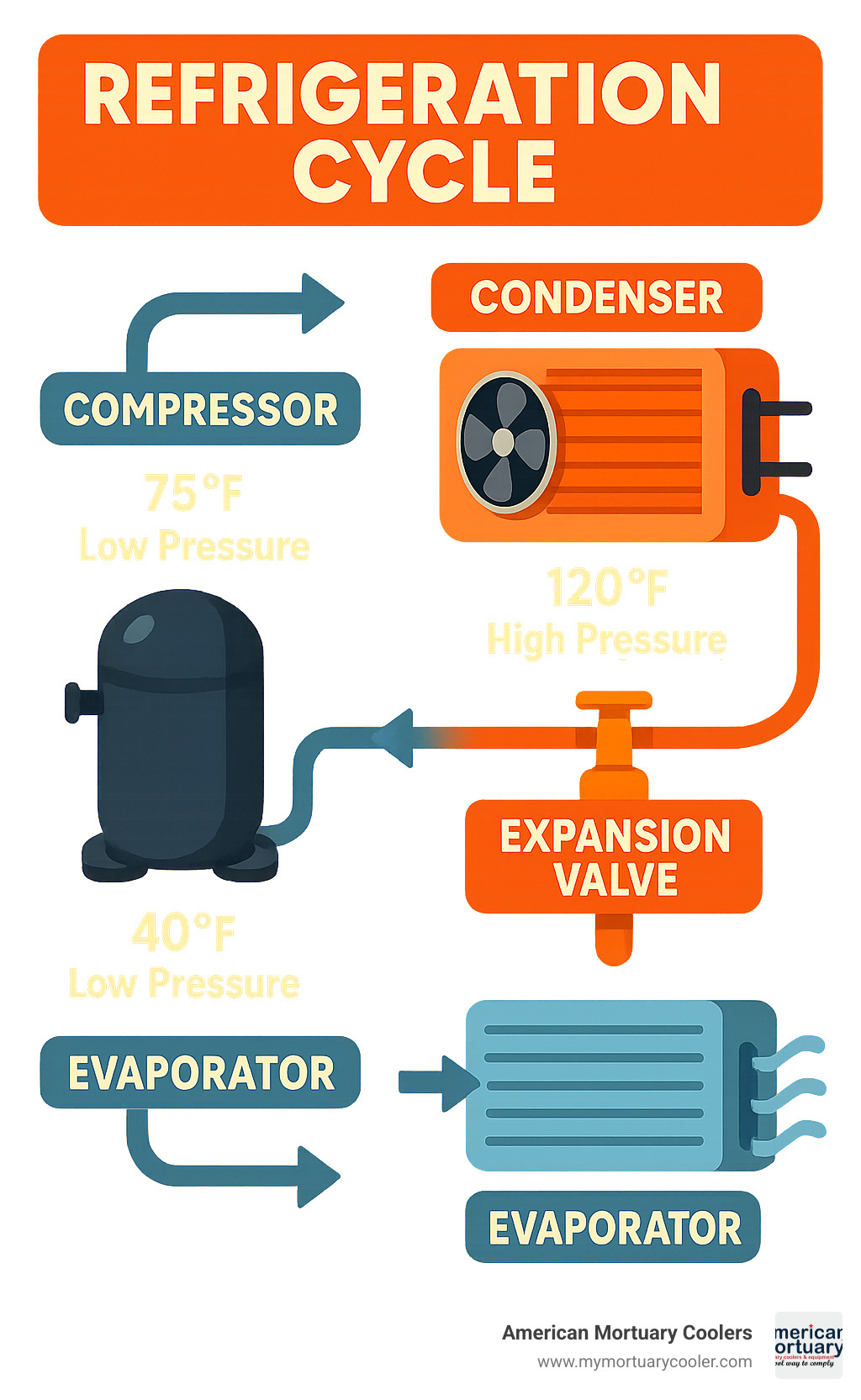
Refrigerated air conditioning vocabulary:
How Refrigerated Air Conditioning Works
Refrigerated air conditioning doesn't create cold air - it moves heat from inside your home to outside. Think of it as a heat-moving machine that uses a special fluid called refrigerant that constantly changes from liquid to gas and back again.
The refrigeration cycle works in four main steps:
First, cold liquid refrigerant flows through the evaporator coil inside your home. As warm indoor air blows across this coil, the refrigerant absorbs the heat and transforms into a gas. This is where the actual cooling happens.
Next, the compressor grabs this warm refrigerant gas and squeezes it under high pressure, making the gas even hotter.
Then, this super-hot refrigerant gas travels to the condenser coil outside your home. A fan blows outdoor air across this coil, and the refrigerant releases all that heat it picked up inside. As it cools down, it condenses back into liquid form.
Finally, the expansion valve drops the refrigerant pressure and temperature before sending it back to the evaporator to start the whole process over again.
This cycle repeats continuously while your system runs. Modern thermostatic controls manage both the temperature you feel (sensible heat) and the moisture removal (latent heat) to keep you comfortable.
For more detailed information about the cooling process, check out our comprehensive guide on understanding refrigerated cooling.
The Science Behind the Refrigeration Cycle
The system works because of basic physics - when you squeeze a gas, it gets hotter. When you let it expand, it gets cooler. This pressure-temperature relationship makes everything possible.
When refrigerant changes from liquid to gas (or vice versa), it absorbs or releases a huge amount of energy. This phase change is what gives refrigerated systems their cooling power, similar to how sweating cools you down.
Key Components and Sensors
Scroll compressors have replaced old piston-style compressors, using spiral-shaped scrolls that compress refrigerant more smoothly and quietly while lasting longer.
Inverter drives let compressors run at different speeds instead of constantly turning on and off, using less energy and keeping temperatures more consistent.
Smart thermostats learn your schedule, adjust temperatures automatically, and let you control everything from your phone, with some integrating with smart home systems to optimize energy use.
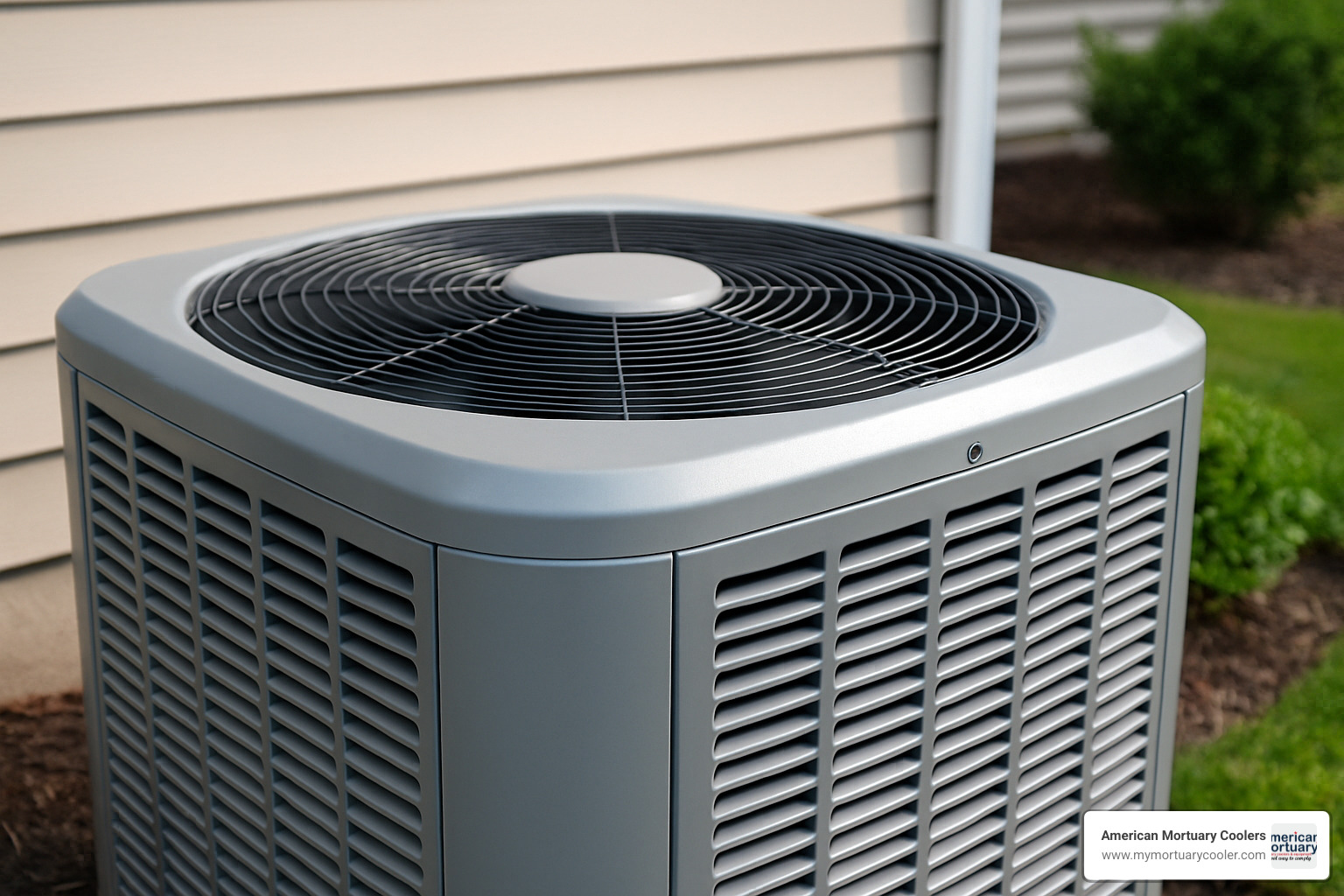
Types of Refrigerated Air Conditioning Systems & How They Compare
When shopping for refrigerated air conditioning, you'll encounter several different system types. The biggest choice is between true refrigerated systems and evaporative coolers.
Refrigerated air conditioning uses the refrigeration cycle, working reliably in any climate while removing humidity. Evaporative coolers work by evaporating water - they're energy-efficient but only effective in dry climates.
| Feature | Refrigerated AC | Evaporative Coolers |
|---|---|---|
| Climate suitability | All climates | Dry climates only |
| Humidity control | Removes humidity | Adds humidity |
| Energy efficiency | Moderate to high | Very high |
| Installation cost | Higher | Lower |
| Operating cost | Moderate | Low |
| Maintenance | Moderate | Higher |
Central Refrigerated Air Conditioning Systems
Central systems are the workhorses of whole-home cooling. One outdoor unit powers your entire house through ductwork, including an outdoor condensing unit and indoor air handler.
Modern central refrigerated air conditioning systems achieve SEER2 ratings up to 21, a huge improvement over older systems that maxed out around 10 SEER.
Zoning controls let you set different temperatures for different areas, saving energy while keeping everyone comfortable.
Ductless & Mini-Split Options
Mini-splits connect an outdoor unit to indoor units using just a small refrigerant line through a three-inch wall hole. Multi-zone systems can power up to eight indoor units from one outdoor unit, each with its own temperature control.
They're perfect for home additions or older homes where installing ductwork would be difficult, and many feature inverter technology for consistent temperatures and lower energy bills.
Portable & Window Units
Portable units range from 5,000 BTU units handling rooms up to 170 square feet, to 14,000 BTU models cooling spaces up to 550 square feet. Look for dual-hose designs for better efficiency.
Window units typically cost less and provide better efficiency than portables without taking up floor space. Both options now come with smart controls and Wi-Fi connectivity.
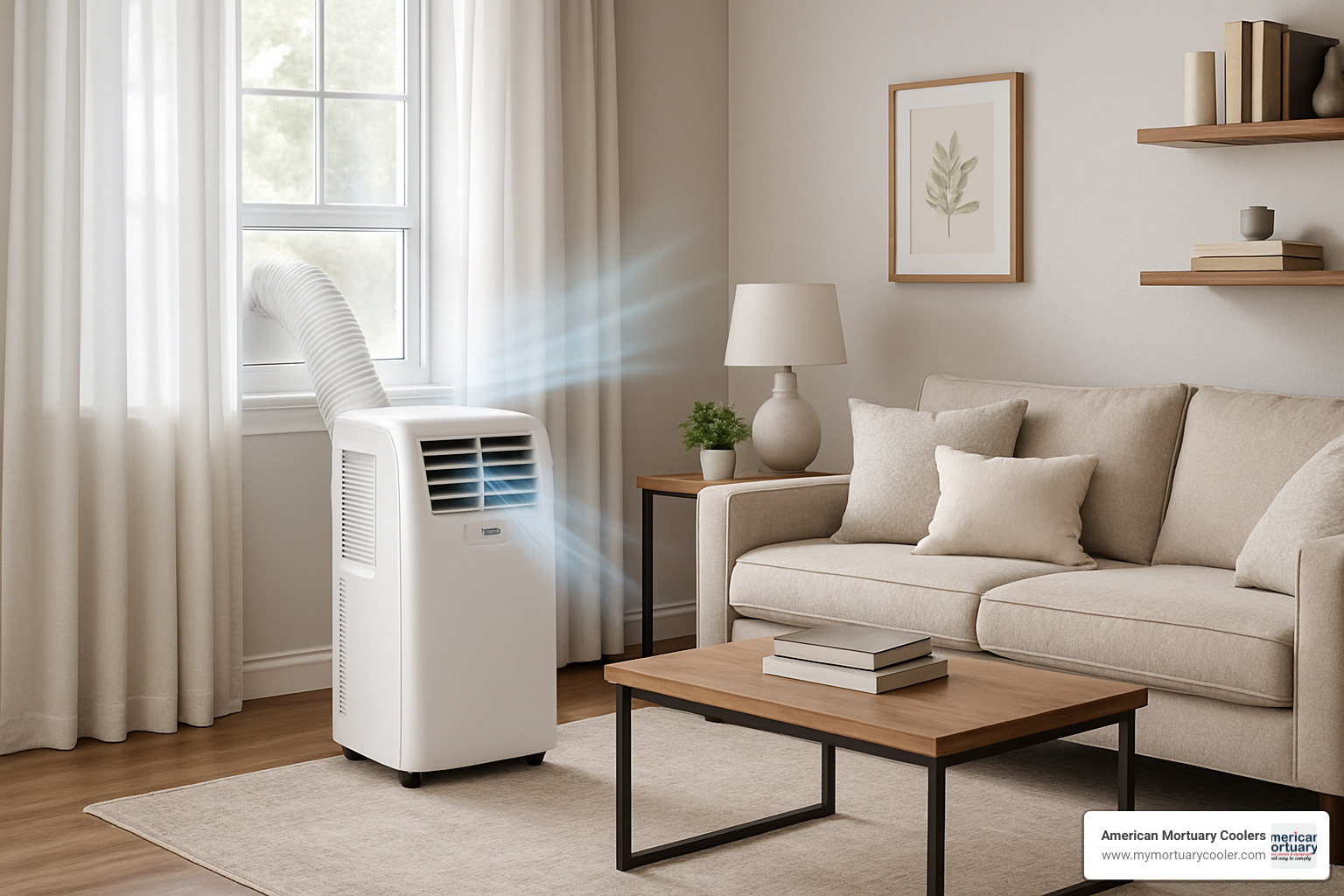
Buying, Sizing & Cost Guide for Refrigerated Air Conditioning
Getting the right refrigerated air conditioning system size makes all the difference. An oversized system cools too quickly without removing humidity, while an undersized system runs constantly without reaching your target temperature.
Professional load calculations using Manual J methodology consider square footage, insulation levels, window efficiency, local climate, and heat-generating appliances.
The new SEER2 rating system that started in 2023 gives you a more realistic picture of efficiency than old SEER ratings, reflecting real-world performance conditions.
For specialized commercial cooling needs, our guide on choosing walk-in coolers covers refrigerated cooling solutions for business applications.
The EPA provides helpful information about changing refrigerant regulations at their HFC phasedown FAQ page.
How to Size Refrigerated Air Conditioning Correctly
Square footage gives you a ballpark figure - typically 20-25 BTU per square foot - but that's just the starting point.
Your climate zone plays a huge role. A home in Phoenix needs significantly more cooling capacity than the same size home in Seattle.
Insulation quality can make or break your comfort. A well-insulated home with efficient windows might need 30% less cooling capacity than an older home with single-pane windows and poor insulation.
Professional sizing using Manual J calculations considers your specific building characteristics, local weather data, and usage patterns, ensuring you get exactly the right amount of cooling capacity.
Upfront Costs & Available Rebates
Portable units range from $300-$800, with premium units reaching $2,000. Window units typically cost $200-$600. Mini-split systems cost $2,000-$8,000 depending on indoor units needed. Central systems cost $5,000-$15,000+ including installation.
Manufacturer rebates like Lennox's $2,000 Ultimate Comfort System rebate can significantly reduce costs. Utility rebates and tax credits may apply to qualifying systems, and many offer financing options.
Equipment costs are expected to rise 7-10% due to new refrigerant regulations, but long-term energy savings from modern high-efficiency systems typically offset higher upfront costs.
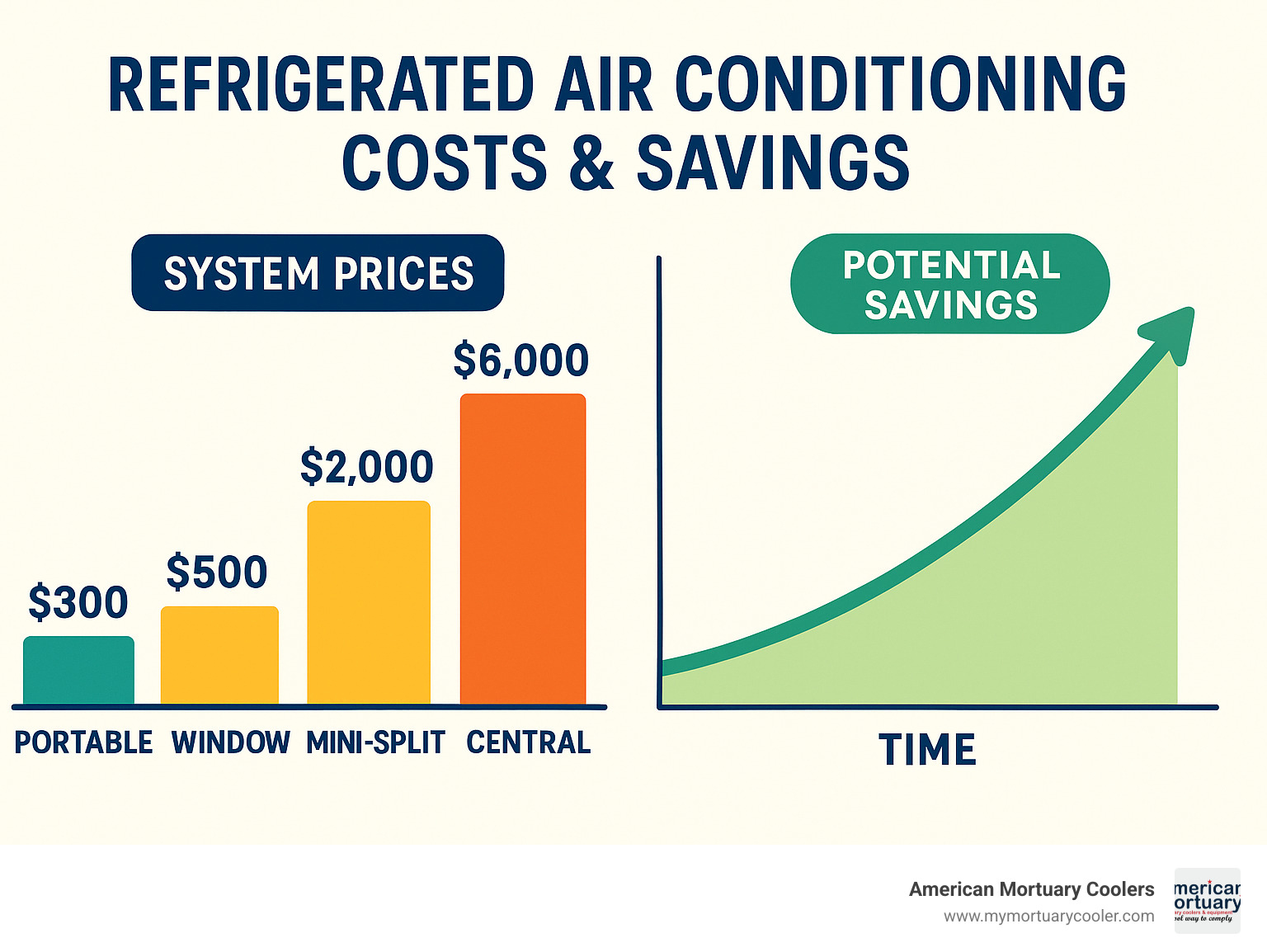
Maintaining, Troubleshooting & Maximizing Efficiency
Taking care of your refrigerated air conditioning system is like car maintenance - a little regular attention keeps everything running smoothly and prevents expensive surprises.
The most important task is changing filters regularly every 1-3 months. Dirty filters make your air conditioner work harder, like trying to breathe through a clogged nose.
Keep coils clean - both indoor evaporator and outdoor condenser coils need to transfer heat effectively. When covered in dirt, your system struggles to do its job.
Watch for refrigerant leaks - if your system isn't cooling like it used to, low refrigerant might be the culprit. This requires professional attention but catching it early saves money.
Modern smart thermostats learn your schedule and adjust temperatures automatically. Programming setback temperatures can cut cooling costs by 10-15% without sacrificing comfort.
Inverter technology in newer systems provides remarkable efficiency improvements by adjusting compressor speed continuously instead of cycling on and off.
For commercial refrigerated systems, our guide on maintaining walk-in coolers covers principles that apply to all refrigerated cooling equipment.
Troubleshooting Refrigerated Air Conditioning Issues
Low airflow is usually the easiest fix - check your filter first. Make sure all vents are open and nothing's blocking them.
Ice buildup on your indoor unit usually happens because not enough air flows over the coil, often due to dirty filters. Turn off your system, let ice melt completely, change the filter, and see if that fixes it.
Short cycling - when your system turns on and off frequently - wastes energy and stresses components. This can happen if your system is oversized, your thermostat has issues, or refrigerant levels are low.
Strange noises deserve attention. Grinding sounds often mean bearings are wearing out. Squealing might indicate belt problems. Hissing could signal refrigerant leaks.
Tips to Extend Lifespan & Cut Energy Bills
Annual professional maintenance pays for itself by catching small problems before they become expensive ones and optimizing system performance.
Smart programming makes a big difference. Set temperatures a few degrees higher when away or sleeping. Many find 78°F comfortable once they adjust, compared to the 72°F many homes maintain.
Proper refrigerant levels are critical for efficiency and longevity. Only licensed technicians should handle refrigerant, but watch for signs like reduced cooling or ice formation.
The simplest advice: change those filters regularly. It's the one maintenance task that makes the biggest difference in performance, energy consumption, and longevity.
Environmental & Indoor Air Quality Considerations
The refrigerated air conditioning industry is experiencing major environmental changes. The EPA is phasing out R-410A refrigerant due to its high Global Warming Potential (GWP).
Starting January 1, 2025, new A2L refrigerants like R-454B offer up to 99% reduction in global warming potential. These are classified as "mildly flammable" but are low-toxicity and include multiple safety features.
Beyond environmental benefits, refrigerated air conditioning provides significant indoor air quality advantages. The system naturally removes excess humidity, preventing mold and bacteria growth that thrives in moist conditions.
Air filtration captures dust, pollen, pet dander, and other particles every time air circulates through your system. Higher-end systems can filter out smaller particles and some bacteria.
Temperature stability supports better health and productivity. When indoor temperatures fluctuate widely, your body works harder to maintain core temperature, affecting sleep quality and concentration.
The humidity control aspect deserves special attention. Unlike evaporative coolers that add moisture, refrigerated air conditioning removes humidity as part of the cooling process, creating more comfortable environments and protecting homes from moisture damage.
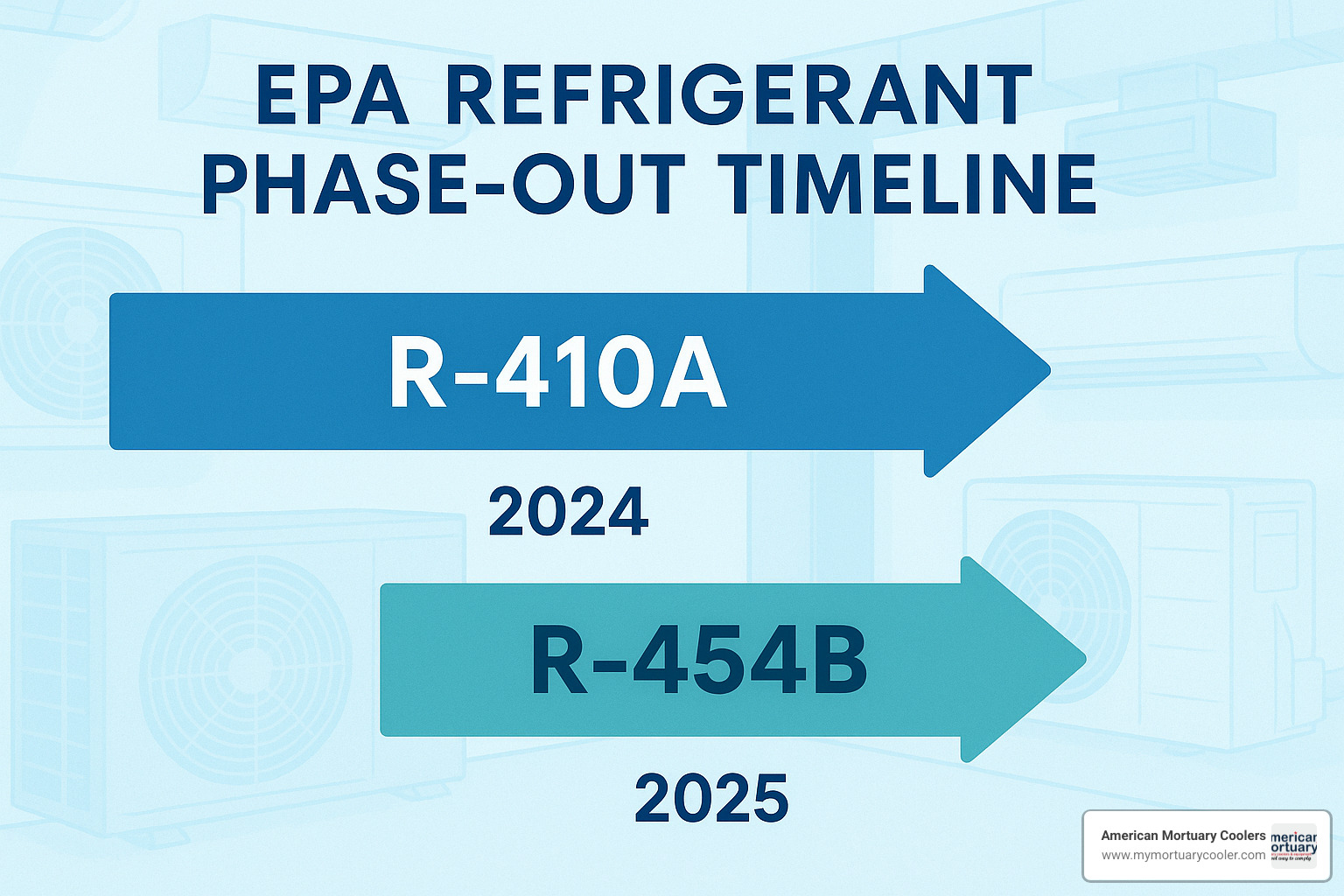
Frequently Asked Questions About Refrigerated Air Conditioning
What is refrigerated air conditioning and how is it different from evaporative cooling?
Refrigerated air conditioning works like a giant refrigerator, using a closed-loop system with refrigerant that absorbs heat from inside and dumps it outside. This works reliably in any climate.
Evaporative cooling blows air over water-soaked pads, cooling through evaporation. This only works well in dry climates and actually adds moisture to the air.
The biggest difference is humidity control. Refrigerated systems pull moisture out while cooling, leaving you comfortable. Evaporative coolers add moisture, making humid days feel worse.
How energy-efficient are refrigerated air conditioners today?
Today's refrigerated air conditioning systems achieve efficiency improvements that can cut cooling bills in half compared to pre-2006 systems.
Inverter technology lets compressors adjust speed based on cooling needs rather than cycling on/off completely. Smart thermostats learn habits and adjust automatically.
Modern systems achieve SEER2 ratings up to 22, more than double the efficiency of older 10 SEER units. Upgrading could save up to 52% on annual cooling costs - potentially $2,500 over 15 years.
What maintenance tasks should homeowners do vs hire out?
You can handle routine tasks: Change filters every 1-3 months, keep vents clear, give your outdoor unit breathing room by clearing debris, and do visual checks for obvious problems.
Professional work includes: Refrigerant handling (requires EPA certification), electrical work, deep coil cleaning, and system calibration.
Annual professional service pays for itself by catching small problems before they become expensive repairs.
Conclusion & Next Steps
Refrigerated air conditioning has proven itself as the gold standard for reliable cooling. Unlike evaporative coolers that only work in desert climates, refrigerated systems deliver consistent comfort in any climate.
Modern systems with SEER2 ratings up to 22 can slash cooling bills by more than half compared to older units. Smart controls and new environmentally friendly refrigerants starting in 2025 mean you can stay cool responsibly.
At American Mortuary Coolers, our work with precision refrigerated systems across Tennessee, Atlanta, Chicago, Columbia, Dallas, Los Angeles, New York, Pittsburgh, and throughout all major regions has taught us that reliable refrigerated cooling isn't just about comfort - it's about peace of mind.
Ready to upgrade? Start by evaluating your current system. If it's over 10 years old, you're probably spending more on electricity than necessary. Check available rebates - with manufacturer incentives like Lennox's $2,000 program and utility cash-back offers, upgrading might cost less than expected.
Proper sizing matters. Professional load calculations using Manual J methodology prevent the problems of oversized systems that waste energy or undersized systems that never reach target temperatures.
The 2025 refrigerant transition to A2L refrigerants with 99% lower environmental impact provides another reason to plan ahead. These new systems include safety features and offer the same reliable performance.
Your investment pays off over time. Quality refrigerated air conditioning systems last 15-20 years with proper maintenance. Energy savings often pay for new systems within 7-10 years through lower utility bills.
Whether cooling a single room with a mini-split or your entire home with a central system, refrigerated technology gives you the control and reliability you deserve.
For more information about our specialized cooling solutions and how refrigerated air conditioning technology applies to commercial applications, visit our website at mymortuarycooler.com.
The future looks bright for refrigerated air conditioning with better efficiency, smarter controls, and cleaner refrigerants making tomorrow's systems even better than today's options.
















